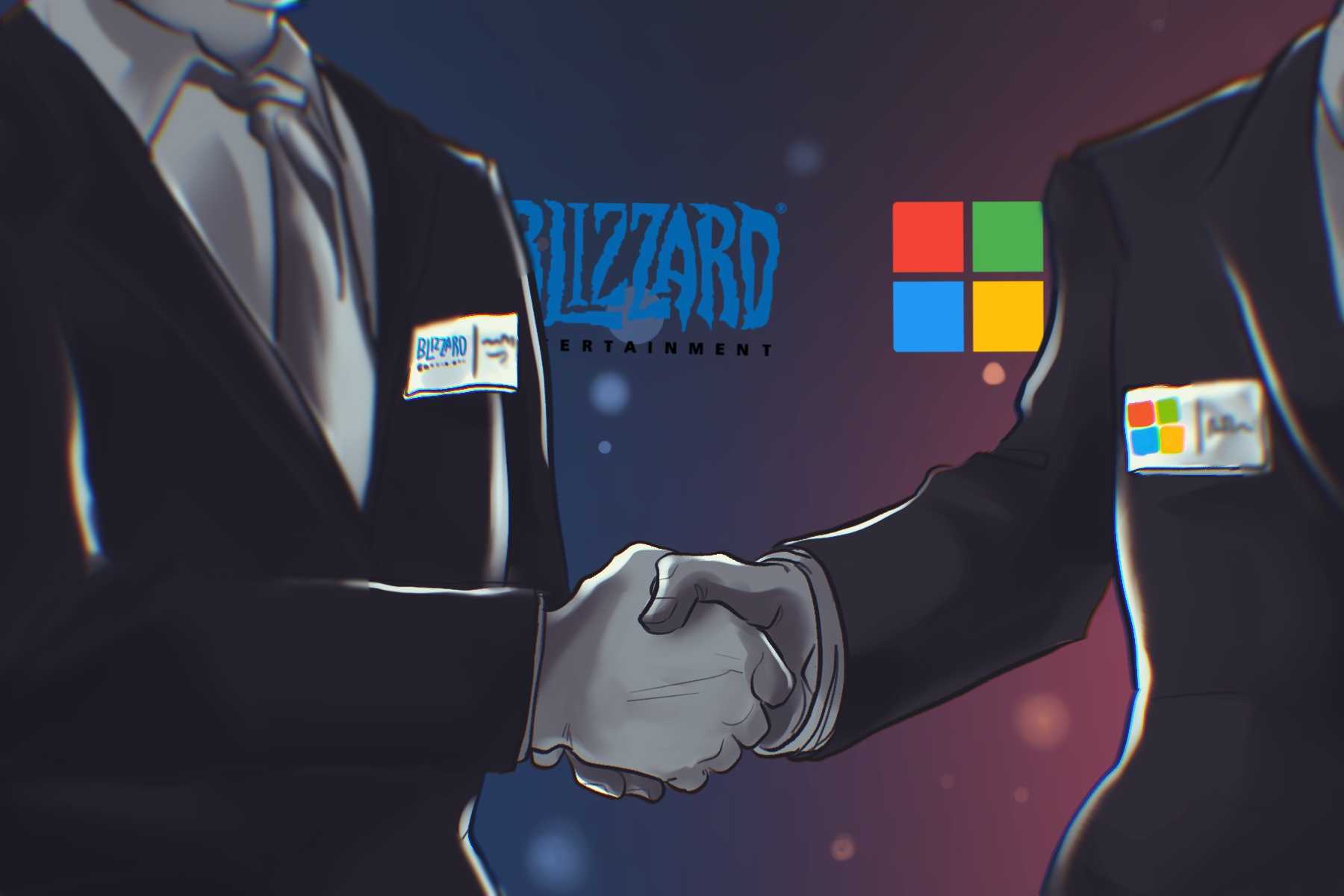Before the formation of Activision in 1979, video games were essentially exclusive to brand-specific consoles, with developers releasing their own consoles for their brand’s published games. Today, video game enthusiasts have an abundance of options to choose from, with Microsoft’s Xbox, Sony Group Corp.’s PlayStation, the Nintendo Co. Ltd.’s Switch and multiple PC launchers offering expansive game catalogs that are available to play across different platforms.
A key figure in the birth of the third-party developer, Activision rose through the ranks to become a major player in the industry. It continued to gain popularity until a series of sexual harassment allegations, lawsuits and scandals bogged it down to the point where Microsoft Corp. announced it would buy Activision Blizzard in an all-cash deal for $68.7 billion. Facing acquisition and still dealing with the fallout of a discrimination lawsuit, the company’s future is uncertain.
Hard Beginnings
In 1979, a report circulated through entertainment industry giant Atari Inc.’s offices with a list of the company’s best-selling video game cartridges. A group of games that collectively produced about 60% of Atari’s sales turned out to be the results of just four top programmers — David Crane, Alan Miller, Larry Kaplan and Bob Whitehead — none of whom had received any kind of bonus, royalties or recognition. Combined, these four men brought in around $60 million dollars for Atari while being paid only $22,000 a year.
Crane and Miller soon left Atari and teamed up with entertainment executive Jim Levy to form Activision that same year, enticing Kaplan and Whitehead to jump ship with them. Named so that it would show up ahead of Atari in alphabetical lists, Activision quickly developed a signature look and brand that gave them an edge over the competition. They started to crank out game cartridges that would fit into the already-distributed Atari 2600 console.
Atari quickly turned around and sued them for violating nondisclosure agreements and stealing trade secrets. In 1982 the case was settled, effectively creating and legalizing Activision as the first third-party developer, opening the door for a multitude of challengers to flood the market. By the next year, the infamous Video Game Crash of 1983 was underway. Few companies emerged strong on the new playing field, possibly due to the excess of consoles, increasing sales of personalized computers and shoddy game releases. The industry was now a world with fewer consoles for consumers to choose from and games designed around creativity and quality, instead of rushed releases that reflected executive greed.
Mainstream Success
Several years later Activision began to branch out, changing its corporate name to Mediagenic and entering the business software industry. This direction proved disastrous for the company when it spiraled into over $60 million of debt and its stock value dropped to $2 million total. A group of four investors, led by then-28-year-old Bobby Kotick (current CEO of Activision Blizzard), seized the opportunity, buying the company for $500,000 and rapidly turning it around.
The company grew quickly, with Kotick returning Activision to its video game roots and combining its strong distribution network with remade games to create a new revenue stream. Soon, Activision was once again a force to be reckoned with and began to seek out purchasing opportunities of its own, starting in 1990 with Raven Software. Some noteworthy acquisitions also included Treyarch (2001) and Infinity Ward (2003), with all three companies ending up on the development team for Activision’s highly successful Call of Duty franchise.
Around 2006, Kotick began to eye the MMO (massively multiplayer online) market, using developer Blizzard Entertainment-owned World of Warcraft to break in. Kotick conceded his majority share in Activision, acquiring Vivendi Games and their subsidiary, Blizzard Entertainment, as well as their projects. Now a powerhouse in the industry, Activision Blizzard successfully climbed out of the pit and added multiple highly profitable gaming franchises to its name — think Overwatch, Call of Duty, World of Warcraft and Tony Hawk’s Pro Skater.
Not only were these names widely recognizable, but they also generated a ridiculous amount of revenue for the company, with their 2020 Call of Duty: Warzone bringing in a reported $5.2 million every day. The company had also acquired video game developer and publisher King (owner of social games like Candy Crush) for $5.9 billion back in February 2016 to become the largest game network in the world.
Scandal
When the California Department of Fair Employment and Housing filed a lawsuit in July 2021 against Activision Blizzard, most of the world was shocked. Activision Blizzard employees and the women that made up 20% of their workforce were not. Female employees issued a complaint saying they were subjected to a “pervasive frat boy workplace culture,” including demeaning and offensive jokes, inappropriate sexual banter and a drinking game involving office cubicles. It was also claimed that female employees were held back from promotions due to pregnancy concerns, subjected to advances from male employees and supervisors and delegated an unfair amount of work while male employees played video games during the day.
The “breeding ground for harassment and discrimination” convinced many women to leave the employer and may have contributed to the tragic suicide of 32-year-old Kerry Moynihan in 2017 during an Activision company retreat. Moynihan’s parents recently sued Activision Blizzard for the wrongful death of their daughter, alleging that sexual harassment was a “significant factor” in her death and claiming a supervisor lied to detectives about his relationship with her during the postmortem investigation.
After the California suit was reported, employees staged walkouts and called for CEO Bobby Kotick’s resignation, citing his knowledge and tolerance of the toxic culture. A Wall Street Journal report also claimed that the CEO knew of sexual misconduct accusations, including a rape allegation from a former Sledgehammer Games employee. The only result was the resignation of Blizzard President J. Allen Brack, with Kotick staying on. A few weeks later, an Activision Blizzard shareholder filed a lawsuit against the company for “significant losses and damages,” blaming negligent leadership for the substantial loss.
In the meantime, over 2,000 current and former employees signed a letter demanding Activision Blizzard “recognize the seriousness of these allegations” and condemned the company’s official statements issued in response to the lawsuit. With Kotick still in place as CEO and the company in drastic need of an overhaul, no one was sure where Activision was headed — until Microsoft announced its plan to buy out the company.
Acquisition and Activision Blizzard’s Future
On Jan. 18, Microsoft released its plans to acquire the company at $95 a share, with the transaction totaling a whopping $68.7 billion. Following the announcement, shareholder Kyle Watson filed a suit against Activision Blizzard and its board of directors. Watson called the sale “unfair for a number of reasons,” including Securities Exchange Act violations and the immediate, lucrative benefits that the deal would bring to the board.
While the case disappeared in the court system, other Activision Blizzard stockholders approved the sale during a special meeting on April 28. By May 10, Kyle Watson had filed a voluntary dismissal. Still awaiting regulatory review and unsure if the deal would pass antitrust concerns, members of the board hammered out the details. After the deal closes, most likely sometime in the first half of 2023, Kotick will step down. Reuters estimated he would receive a $390 million payout from his 3.95 million Activision shares. If nothing else, the decision would at least remove what many see as the top-ranking culprit behind the company’s toxic and inappropriate workplace atmosphere.
Unfortunately, the future of Activision Blizzard and its content is even more uncertain in the era of subscription gaming and console exclusives. Microsoft’s subscription services, Xbox Game Pass and PC Game Pass, could see the addition of Activision Blizzard games once the deal closes. Titles like Call of Duty, Overwatch and Diablo would become available starting at $9.99/month and ready to stream on mobile devices.
While this is nothing but a boon for Microsoft, many gamers are concerned that the company might seize the potential to change Activision titles to Microsoft exclusives. This would cut off a significant portion of the market that uses Sony’s PlayStation consoles. Call of Duty makes millions across platforms and turning it into an exclusive would certainly ruffle the feathers of the franchise’s PlayStation fans. Microsoft could cement its footing in the console market by converting other major games to exclusives, however, forcing gamers to buy either an Xbox console or their Game Pass. Either way, Activision Blizzard has fallen far. They, along with Microsoft, have a hard road ahead of them in rebuilding the Activision brand.

















